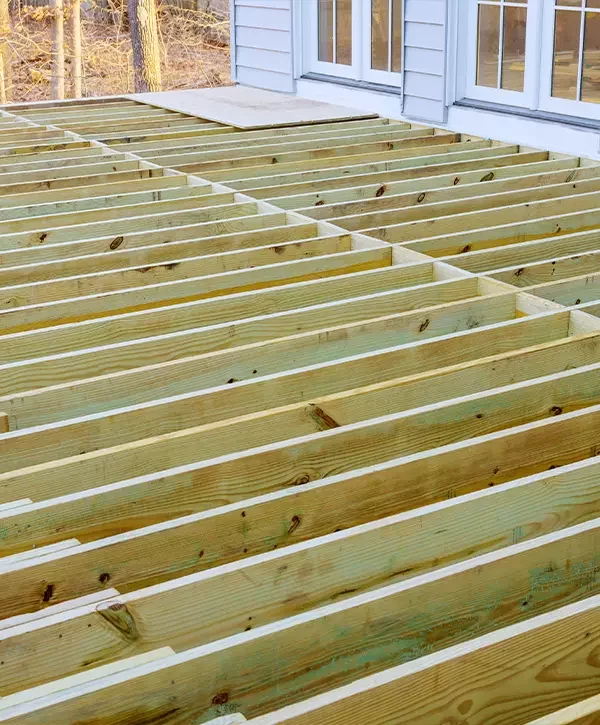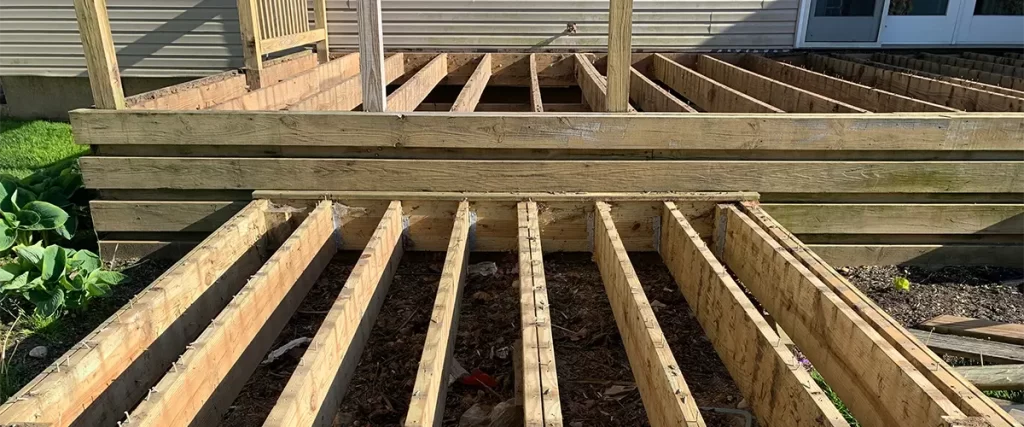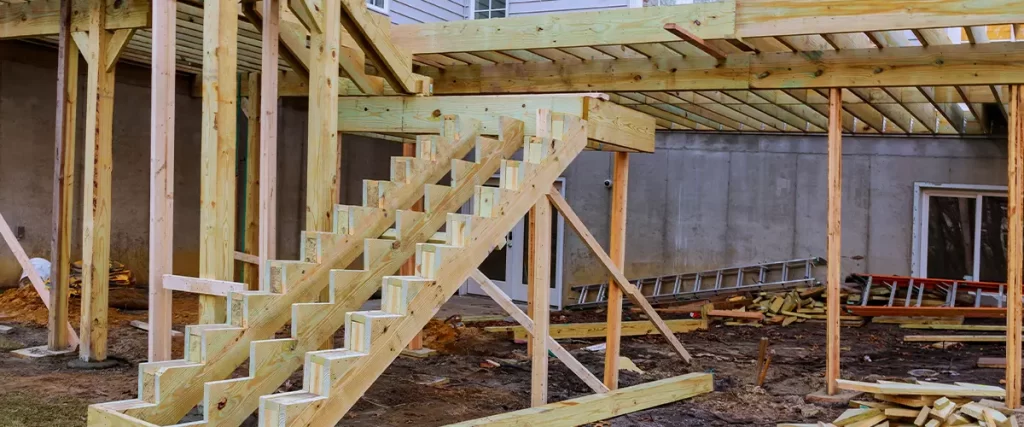Lumber Framing In Omaha, NE
Elevate your outdoor space with precision-engineered deck framing solutions tailored to withstand the elements and enhance your property's appeal in Omaha, Nebraska.

Lumber framing serves as the backbone of a deck, playing a crucial role in its stability, durability, and overall structural integrity. Quality lumber framing ensures that the deck can withstand the test of time and environmental elements.
Whether it’s an affordable pressure-treated lumber frame or a different framing material, Deck Bros can build you the perfect frame for your upcoming deck in Omaha, NE. We have a lifetime of experience building, repairing, and upgrading decks throughout the Omaha Metro Area, and lumber framing is one of our specialties. So, if you want a quality frame that’s bound to stand the test of time, we might be the perfect fit.

The Importance Of A Quality Lumber Deck Framing
Framing Lumber Structural Integrity and Safety
A quality lumber frame is crucial for ensuring your deck’s structural integrity and safety. Even for house construction, the frame serves as the foundation that supports the entire structure, including the decking, railings, and any additional features.
A well-constructed frame can withstand the load placed on the deck, preventing sagging, warping, or collapse. This is especially important for decks that will be used for social gatherings, entertaining, or supporting heavy furniture and appliances. A structurally sound frame contributes to the overall safety of the deck, reducing the risk of accidents or injuries.
Longevity and Durability
The right lumber framing contributes significantly to the longevity and durability of the deck. Using treated and properly seasoned lumber helps resist decay, insect infestations, and other forms of deterioration caused by exposure to the elements.
A durable frame can withstand weather extremes, including rain, snow, and temperature fluctuations, without compromising its structural integrity. Investing in high-quality lumber for the frame ensures that your deck will stand up to the test of time, reducing the need for frequent repairs or premature replacement.
Support for Design and Functionality
The lumber frame provides essential support for the design and functionality of your deck. Whether your deck features intricate designs, multi-levels, or specific load-bearing requirements, a quality frame is essential for bringing the design vision to life.
It allows for the secure attachment of decking materials, railings, stairs, and other components, contributing to the overall aesthetic appeal of the deck. Moreover, a sturdy frame ensures that the deck functions as intended, providing a reliable and enjoyable outdoor space for various activities, from relaxing to entertaining guests. Choosing a quality lumber frame is essential to align the structural support with the intended design and functionality of the deck.

Best 3 Materials For A Good Lumber Frame
Pressure-Treated Lumber Or Southern Yellow Pine
Cedar
Redwood

A Great Alternative To Lumber Frames For Decks
| Method | Cost Per Square Foot |
|---|---|
| Stain & Seal | $0.50 – $1.50 |
| Power Wash, Stain & Seal | $1.00 – $2.50 |
| Power Sanding, Stain & Seal | $2.00 – $4.00 |
| Strip, Stain & Seal | $2.50 – $5.50 |
| Painting | $2.00 – $5.00 |
| Railings & Handrails | $4.00 – $12.00 |
The cost of aluminum deck framing can vary depending on several factors:
- Material Quality: Higher-quality aluminum alloys and construction methods may result in a higher cost.
- Size and Configuration of the Deck: Larger decks or those with complex designs may require more framing components, impacting the overall cost.
- Installation Complexity: The complexity of the installation process, including factors such as the deck's height, the need for additional supports, and the overall design intricacy, can affect labor costs.
- Additional Components: The cost may also depend on additional components or features such as railings, stairs, and any integrated lighting systems that are part of the aluminum deck framing.
- Brand and Manufacturer: Established brands with a reputation for high-quality materials and construction may come with a higher cost.

Cost Of Lumber Framing For Decks In Omaha, NE
Deck Footings
Deck Posts
Deck Frame
Lumber Framing For Decks FAQs
Make Sure You're Getting A Lumber Frame That Lasts A Lifetime

We’ve seen a lot of decks built by fly-by-night contractors that offer homeowners the lowest bid just to sign on the job. These decks have many problems – decks that fail under these people’s feet and create serious trip hazards.
If you’d rather get a lasting decking frame that stands the test of time and accommodates your entire family without a problem, Deck Bros will get it done for you. Contact us at (402) 369-5724 and let our experts build you the best deck you’ll ever get!
